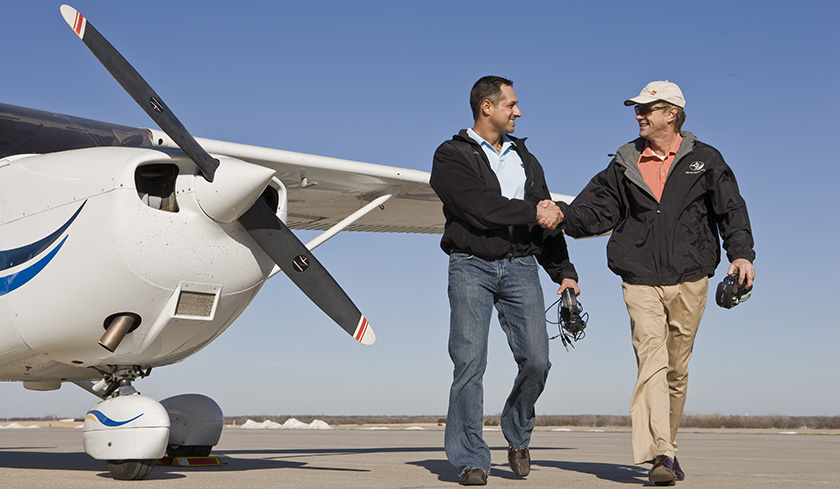First flights then and now
Many enterprising individuals were striving for the big breakthrough when Wilbur and Orville Wright were following their own path to designing and constructing the product of their keen imaginations.
But we’re not here to talk about the Van Cleve, the crowning achievement of their bicycle-building business in Dayton, Ohio.
To clarify, Kill Devil Hill, North Carolina, is where their first 12-second flight made the Wrights “the first men to pilot a heavier-than-air machine that took off on its own power, remained under control, and sustained flight,” as NASA describes the achievement.
A monument marks the spot, as does a satellite-navigation waypoint, identifier VPWZO.
For a pilot, few ways to honor the Wright Brothers surpass a visit to Kill Devil Hill. But even after 114 years since the conquest of powered flight, one such lasting tribute is for the present-day pilot to provide a first flight to a friend, a loved one, or a prospective aviator.
A flight instructor can put a unique stamp on that experience by putting a zero-timer in the left seat for a spell at the flight controls. For many CFIs that’s the most rewarding activity instructing offers, followed closely by soloing a student pilot for the first time.
The first flight brings the newcomer-to-aviation inside the fence, metaphorically speaking, and entrée to the day-to-day business of aviation as it hums along simultaneously with all the technological and design innovation that continues to dish up revolutionary advances one after another—such as an aircraft powered only by the sun that launches on a global journey, flying on through the night on charged-up banks of batteries. Such as research to prove electrically powered aircraft technology, and to develop better fuels for the fleet. Such as new composite materials that provide strength and performance gains, and airfoil innovations like the canard—yes, there was a canard on the Wright Flyer.
Aircraft are taking shape in hangars and home garages, and perhaps here and there at a bicycle shop, after the homebuilder-pilot category experienced its population explosion. Aircraft are put together by high school students destined to have Wright brothers moments of their own at the point when they get to see their creations fly.
Across the country, aviation is moving to the head of classrooms as an exciting component of science, technology, engineering, and math curricula, and as a potential career choice.
Another population explosion is bringing unmanned aircraft into the mainstream, finding uses in science, business, government, and for recreation, challenging regulators to keep up with the expansion.
The long-withheld promise of the flying car makes a new run at realization, and a notion straight from sci-fi—space tourism—beguiles the imagination.
Whether a car will finally fly is anybody’s guess. Until one does, pilots will need a way to get into town from the airport, and Wilbur and Orville Wright would take pleasure in knowing that here too, technology has provided an answer: the fold-up bicycle.





